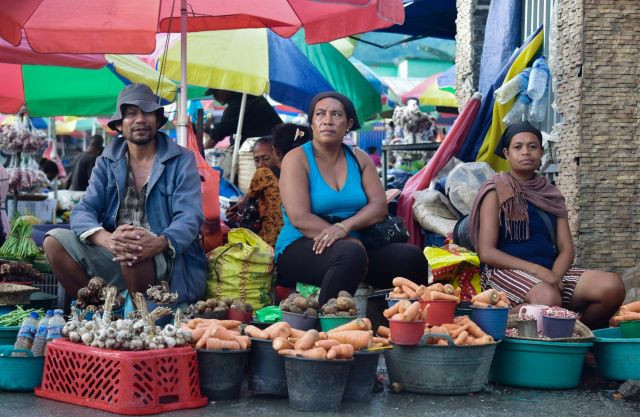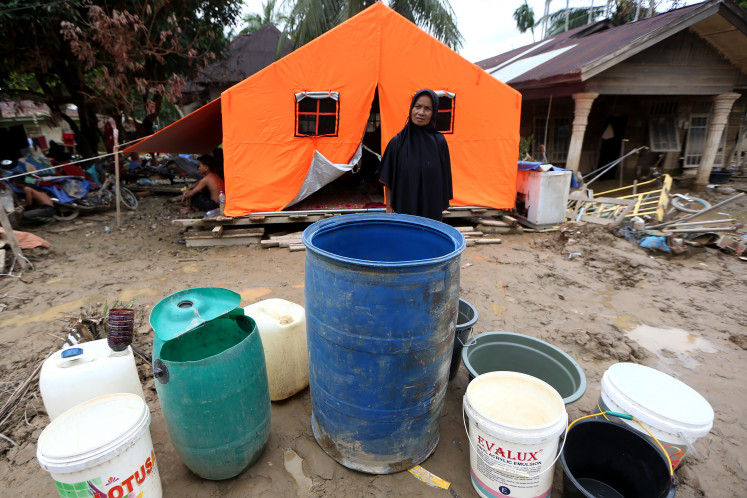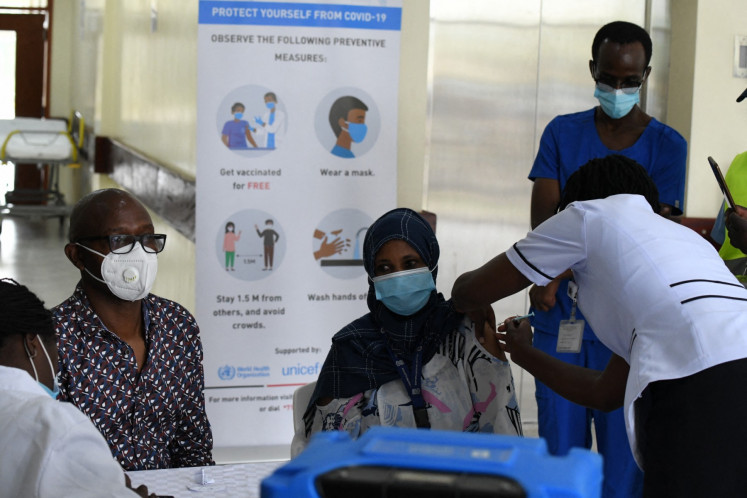Popular Reads
Top Results
Can't find what you're looking for?
View all search resultsPopular Reads
Top Results
Can't find what you're looking for?
View all search resultsTimor-Leste faces uncertainty in every direction
The obstacles the country faces could bring it into dire straits and trigger a crisis with international ramifications, but if successfully surmounted bring progress and prosperity that the world can learn from.
Change text size
Gift Premium Articles
to Anyone
W
hen Timor-Leste regained its independence in 2002, its future looked grim. Twenty-four years of Indonesian occupation had decimated its population and economy, leaving it one of the poorest nations in the world. But by deftly managing its resources and strategic relationships in the region, Timor-Leste has emerged as one of Southeast Asia’s most vibrant and resilient democracies.
That success is now under threat.
As Timor-Leste enters its third decade of statehood, it faces several transnational challenges that are largely beyond its control. The effects of climate change, the lingering impact of the COVID-19 pandemic and increasing competition between China and the United States in the Indo-Pacific are potentially destabilizing for the young country.
To make matters worse, Timor-Leste isn’t dealing with these issues one at a time. Instead, it is staring them down all at once, and their effects will be exacerbated by domestic economic and political transitions over the next decade. If either of these goes awry, much of what Timor-Leste has accomplished over the past 21 years could come undone.
Many nations – especially those with larger populations, economies and land masses – have the necessary time and resources to adapt to complex changes. As a small island with a population of just over 1.3 million and an estimated gross domestic product of US$1,500 per capita, Timor-Leste does not have these luxuries.
Its small economy is dominated by its petrochemical sector, with remittances, agriculture, coffee and tourism making up much of the balance. Its government is reliant on dwindling oil and gas royalties for revenue and, if nothing is done to change course, Timor-Leste will stare down a fiscal cliff within the next decade or so.
To date, efforts to diversify the economy have produced limited benefits, and its economic and fiscal outlook may hinge on the successful development and exploitation of the Greater Sunrise gas field. But it’s not certain that the project will go ahead, and Timor Leste’s hopes of securing funding from Australia, China, or other sources to build the infrastructure necessary for processing the gas domestically haven’t panned out.
The state of Timor-Leste’s economy is central to its political stability. Since 2002, it has been led by a small cadre of resistance-era leaders who have built the country from the ground up and defined its national identity. They are almost universally trusted by the Timorese people to lead their nation.
But as they age, an inevitable transition of power to younger successors is approaching, and it is unclear when and how the “Generation of ‘75” leaders may transfer power to the next generation. If they retire unexpectedly before an orderly succession can be arranged, the resulting power vacuum will test Timor-Leste’s democratic resilience, especially if coupled with a struggling domestic economy.
Collectively, these elements present cause for concern that, if left unaddressed, will reverberate far beyond Timor-Leste’s borders. Geopolitics will ensure this, as its location along the Ombai-Wetar Strait and proximity to Indonesia and Australia are of strategic interest to Beijing, Canberra, Jakarta and Washington.
Timor-Leste’s future isn’t preordained. The obstacles the country faces could bring it into dire straits and trigger a crisis with international ramifications, but if successfully surmounted bring progress and prosperity that the world can learn from, especially when the time comes for less vulnerable nations to grapple with the same hazards facing Timor-Leste in the here and now.
Ultimately, decisions made over the coming years by its leaders and people will determine the direction this young nation takes. The world would be well-served to start paying more attention to this oft-forgotten island; it was brought into being by the United Nations, after all, and the international community bears a special responsibility for its wellbeing.
***
The writer is the author of Timor-Leste’s uncertain future, a report published by the Lowy Institute, and a nonresident fellow with the Atlantic Council’s Indo-Pacific Security Initiative and Global China Hub.











